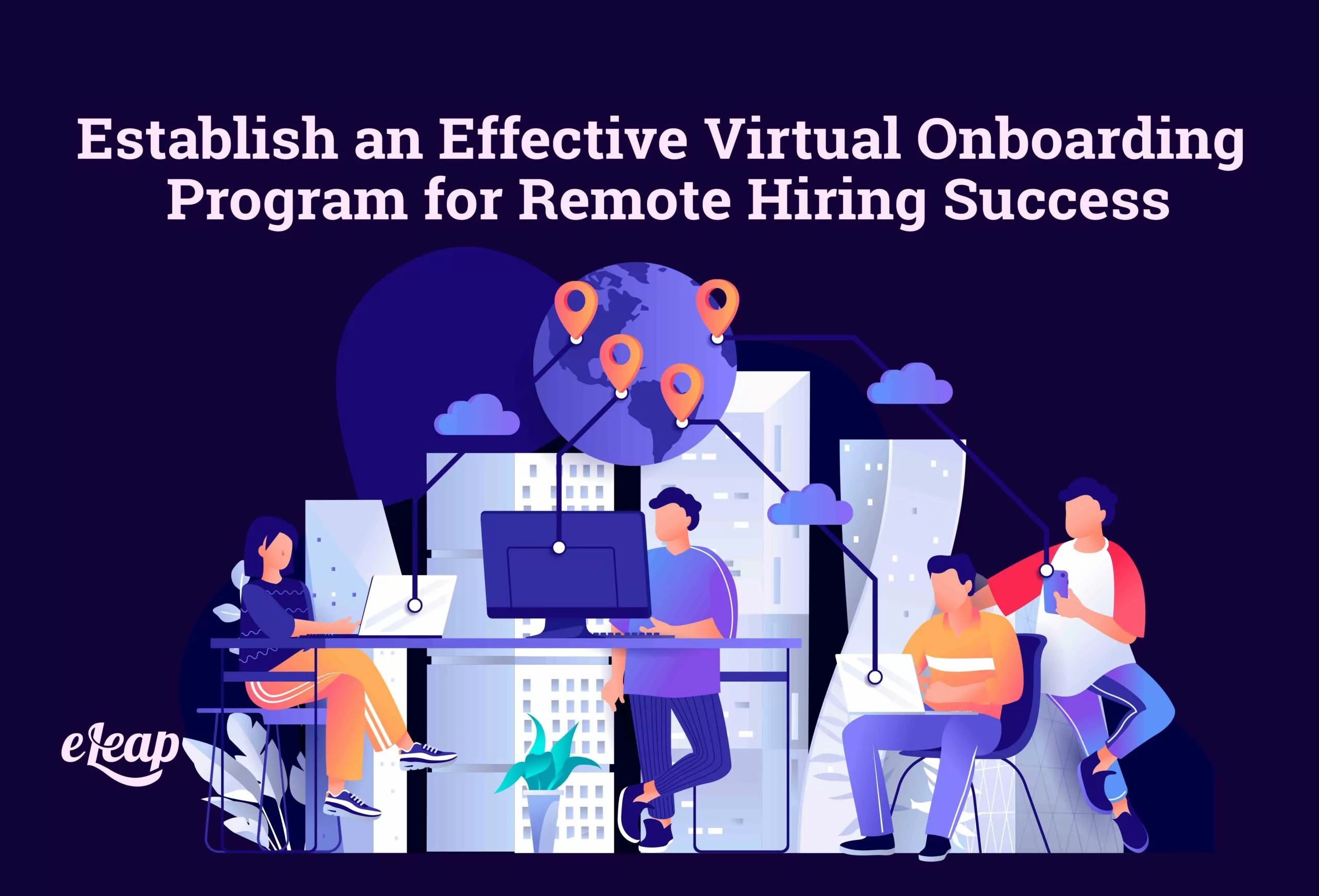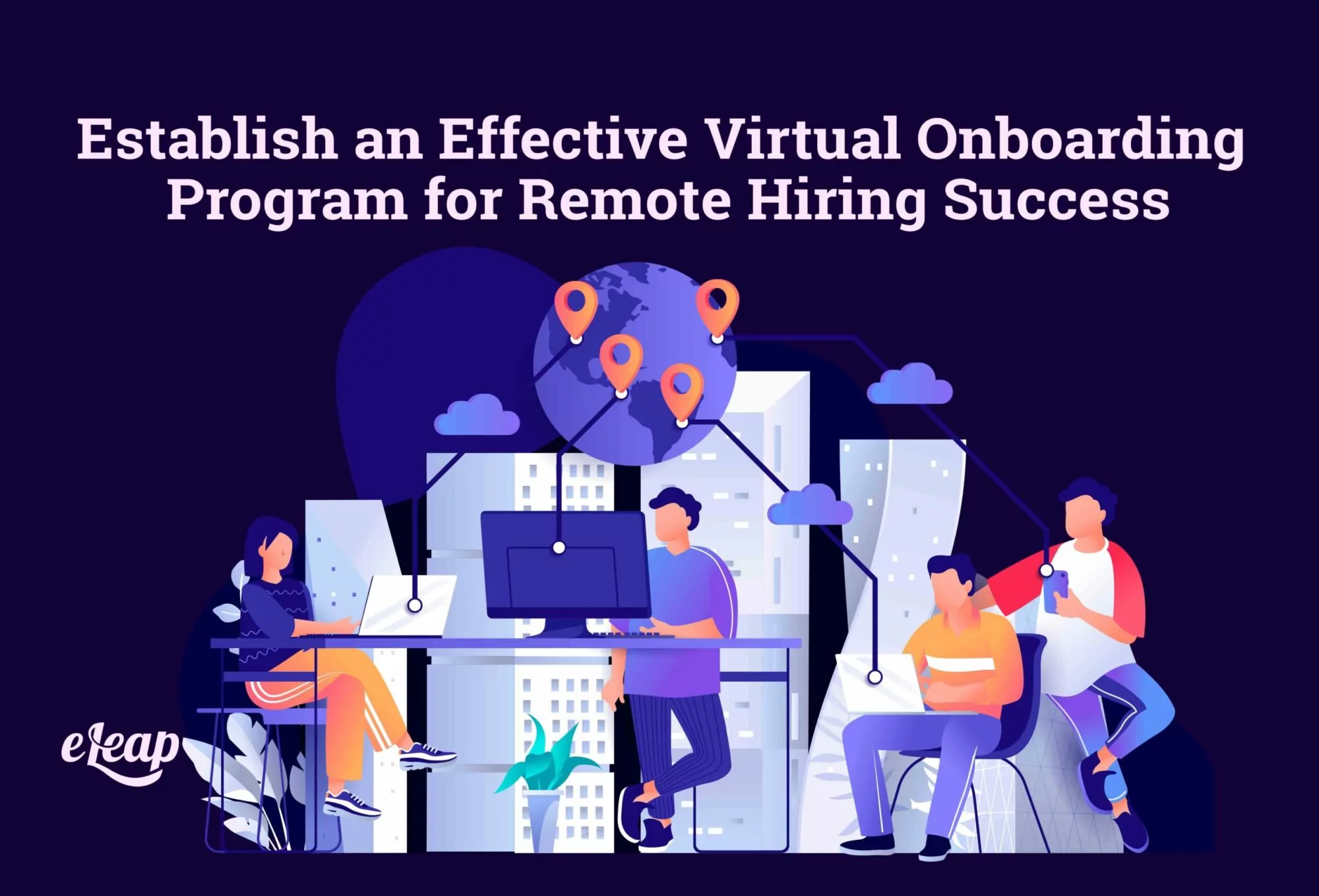Establish an Effective Virtual Onboarding Program for Remote Hiring Success

Today’s employees demand more from the companies they work for. Despite the pandemic wholly embracing the remote work model, many companies are itching to return to the office and therefore not taking the time to consider if their virtual onboarding solution is really working for them. In the haste to keep things running as “normally” as possible, many organizations quickly adopted virtual hiring and onboarding practices with the intention of them being temporary, even if only until a better solution was devised.
Now is the time for that better solution. Now, as more people are returning to the office and some organizations are looking for the key to success in a remote future, it’s time to take a minute to inspect the onboarding processes that are in place to ensure that they deliver the best experience for candidates, and thereby the best candidates for the organization.

Why Organizations Need a Solid Onboarding Process
The onboarding process sets the tone for the entire experience that a new hire has with the organization. Everything, down to the way they fill out paperwork and sign their tax forms, is different, and it needs to be. Today’s employees are used to a more connected, more streamlined process and organizations need to continue to deliver that if they are going to set the right tone.
Onboarding is responsible for acclimating employees to a company, to their role within the company, and the potential future that is there. It also creates engagement and ensures that workers are just as committed to the success of the organization as the organization’s leadership. Without a solid process in place, people will feel like companies aren’t prepared for virtual onboarding or the future of work, and it will threaten the very culture that organizations have worked so hard to build.
According to the numbers, organizations need a dynamic onboarding experience because that alone will increase the retention of new hires by an impressive 82%. That’s quite an increase for something as simple as adopting a modern, flexible virtual onboarding process. Other research points out that:
- 37% of employees said managers were not actively involved in their onboarding or support of the process.
- 69% of workers say they’ll stay for at least three years if the company’s onboarding process is solid.
- Employees that are engaged by a high-quality onboarding process are five times less likely to leave the organization.
- 1 in 10 employees has left simply due to poor onboarding.
So, it’s not so much “why” companies need to invest in quality virtual onboarding processes, but that they must, and they must do so quickly if they are to improve their new hire onboarding and their overall business, not to mention their employee culture.
Virtual Onboarding Do’s and Don’ts
Do create a standard remote onboarding process that includes pre-set expectations and an explanation for all new hires so that they know what to expect along the way. This keeps teams on the same page and ensures that every single candidate has the same experience. It also ensures that candidates know what is expected of them so that they can deliver appropriately.
Don’t sell virtual training videos short. Yes, the boring, outdated videos of decades past are no good. However, thanks to YouTube and other resources, companies can actually make some impressive materials with video today. Make sure they’re relevant, informative, and relatable. Also, consider microlearning videos (less than 10 minutes) instead of hours-long training sessions.
Do make sure that employees have access to all of the tools and resources they need to learn and grow in their roles. Allow them to access and contribute to the discussion and knowledge base that your employees have created, and give them the best training on these tools and software platforms so that they have the best chances of success.
Do start the onboarding process early and provide new hires with an agenda so they know what to expect. This will ensure that people get into the company culture from day one and that there will be no confusion about the process. This can often help answer a lot of questions ahead of time and give people that sense of comfort instead of the first-day anxiety that many experience.
Don’t limit training to one-on-one or self-paced modules. Organizations will also benefit from incorporating virtual meetings and events between the new hires and the team. They might not participate in the same onboarding or training modules, but you can hold virtual events where they can mingle with their new co-workers and find the way to learn that works best for them.
Do schedule meetings, training, and other onboarding events. When you hand new hires an agenda, it shouldn’t just list the vague training topics that will be covered each day. It should have a timeline of training from the first day until they’re released to work in their new role, along with everything that they will do along the way. Some think this feels overwhelming to new hires, but the only thing worse than too much information is not providing enough. New hires don’t like to be left in the dark.
Finally, make sure that you do give everyone a little grace with virtual onboarding and training. For some, it’s an entirely new process and it will require at least a little of a learning curve to master. You can’t expect employees to be perfect from day one. Have support in place and encourage new hires to continue to embrace the system as they grow in their roles so that they can continue to create and follow their own customized learning path.
The Remote Work World is Here to Stay
Even though several companies have already returned to the office, or at least hinted at the idea of doing so, there is no longer a world where remote work doesn’t exist. Many organizations are moving forward with new hires offering remote-only or hybrid roles, and they’re doing so with increasing success. Therefore, it makes sense to develop an onboarding program that can stand up to that success and keep delivering quality employees for the organization even through virtual spaces. Here at eLeaP, we can provide you with the solutions you need to improve your employee training program and garner your results. Go ahead and set up a 30 day free trial today to check out how our system can work for you and your team! The eLeaP continuous performance management system provides organizations with powerful options to attract and retain high caliber team members.